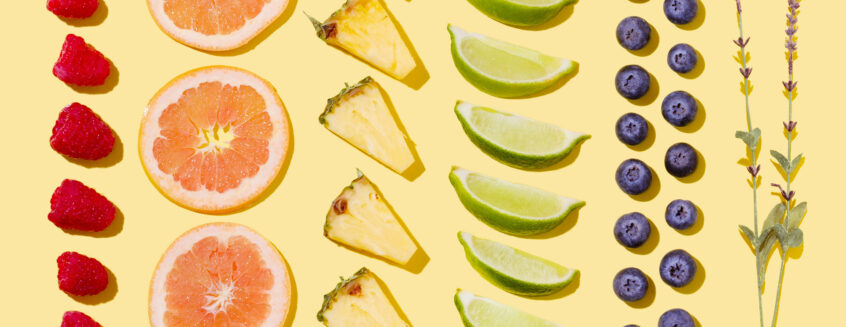Color Me Healthy: What the Colors on Your Plate Mean for Your Eyes
You’ve probably heard the phrase “eat the rainbow”—and when it comes to eye health, that advice is more than just pretty. The natural colors in fruits and vegetables come from powerful plant compounds that play specific roles in protecting your vision.
Let’s break down what each color brings to the table—and how a more colorful plate can help support your eyes from the inside out.
🟠 Orange & Yellow: The Bright Side of Beta-Carotene
Found in: Carrots, sweet potatoes, pumpkins, butternut squash, mangoes
Orange and yellow fruits and veggies are rich in beta-carotene, which your body converts into vitamin A—a nutrient essential for night vision and overall eye surface health.
Good to know: While vitamin A is important, too much preformed vitamin A (like in some supplements) can be harmful. That’s why many eye health supplements focus on safer forms or beta-carotene alternatives.
🟢 Dark Leafy Greens: Lutein & Zeaxanthin Superstars
Found in: Spinach, kale, collard greens, broccoli, peas
These deep greens are packed with lutein and zeaxanthin, two antioxidants that concentrate in the retina and help protect against oxidative stress from light exposure. They act like internal sunglasses—filtering harmful blue light and supporting central vision.
🔴 Red Power: Antioxidant Support from Lycopene & Anthocyanins
Found in: Tomatoes, red peppers, strawberries, cherries
Red produce often contains lycopene, which may help fight free radicals, and anthocyanins, which support blood vessel health—including the tiny vessels in your eyes. They may also contribute to improved night vision and reduced inflammation.
🔵 Blues & Purples: The Anti-Aging Eye Allies
Found in: Blueberries, blackberries, purple grapes, eggplant
These vibrant foods are rich in anthocyanins and other polyphenols that support retinal health and protect against oxidative damage. Some studies also suggest they may help maintain healthy intraocular pressure.
⚪️ Whites & Browns: The Unsung Heroes
Found in: Onions, garlic, cauliflower, mushrooms
While less colorful, these foods offer anti-inflammatory compounds and sulfur-rich nutrients that may indirectly support eye health by promoting overall wellness and circulation.
👁️ Eat the Rainbow, See the Benefits
By filling your plate with a wide variety of colorful produce, you’re giving your eyes the nutrients they need to thrive—whether it’s sharper night vision, protection from blue light, or long-term retinal support.
And when life gets busy or your diet isn’t as colorful as you’d like? That’s where eye health supplements can help support what you might be missing—backed by science and tailored to your needs.
Viteyes Tip:
Look for formulas with lutein, zeaxanthin, vitamin C, zinc, and omega-3s to help keep your eyes nourished, protected, and ready for whatever the day brings.*
